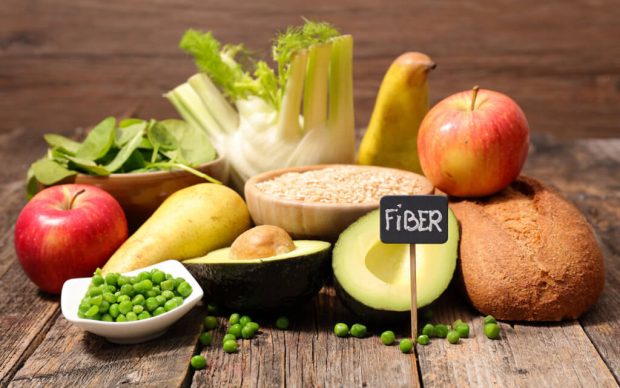
Food provides our body with energy and essential nutrients for growth. However, it is vital to know the different varieties of meals and how you can ensure you maintain a healthy diet. This post will cover a lot about fiber, its benefits, and how you can incorporate it into your daily diet.
So, what is fiber?
Fiber, also known as roughage, is a carbohydrate that the body can’t break down. Therefore, it passes through our body undigested as the body can’t break it down into sugar molecules, as normally happens with other carbohydrates. Whether young or old, every person needs fiber in their diet.
But why do our bodies need fiber?
Fiber occurs in two forms (soluble and insoluble), essential for maintaining a healthy body.
As the name suggests, soluble fiber dissolves in water. It is important in:
- Lowering blood sugar levels
- Lowering blood cholesterol levels
You can find soluble fiber in foods such as oatmeal, beans, and apples. So, if you have a problem with high cholesterol levels, you may want to include these foods, among others, in your diet.
On the other hand, insoluble fiber does not dissolve in water. However, it helps in:
- Moving food through your digestive system
- Preventing constipation and weight management
Some great sources for insoluble fiber include fruits, nuts, and vegetables.
Top 4 Easy Ways of Increasing Fiber in Diet
Here are some manageable ways of adding more fiber to your daily diet.
Add More Vegetables to Your Meals & Ensure You Eat them First
Generally, a vegetable can be any edible part of a plant, including seeds, leaves, stems, roots, and fruits. As such, it is one of the foods available in almost every part of the world. Veggies, especially the non-starchy ones, are rich in nutrients such as fiber and have a low-calorie level.
An excellent strategy to ensure a high intake of veggies is to eat them before eating any other meal.
Switch to Fiber-Rich Snacks
Be it a fruit or a cookie, everyone enjoys a snack from time to time. Snacks help maintain energy levels and increase the intake of nutrients. However, if you want to increase your fiber intake, you can switch to more fiber-rich snacks such as popcorns, nuts, and berries.
Popcorns, for instance, make the best snacks as you can eat a whole bowl without feeling full. In addition, with such high levels of fiber in both snacks and main meals, you can reach the required intake levels daily.
Avoid Juicing, Eat Fruits and Veggies as Whole
Juiced foods are easier to consume. That’s why most people prefer juicing their fruits and veggies rather than eating them whole. However, you should consider the latter if you want to increase your fiber intake.
The juices may contain more concentrated carb nutrients that are easy to absorb. However, they have been stripped of fiber, an essential nutrient the body needs from vegetables and fruits. So, you should consider eating them whole instead.
Include More Berries and Chia Seeds in Your Diet
For most of us, berries and chia seeds are a rare sight on our tables. However, it may be time to find and incorporate some of them into our daily diets. Berries with seeds, for instance, are a great source of fiber. These include the likes of raspberries and blackberries, with fiber levels of 8-gram per cup. You can substitute these with blueberries or strawberries, containing 4-gram and 3-gram per cup, respectively.
On the other hand, chia seeds provide your body with 10 grams of fiber per ounce. Additionally, they offer other minerals such as proteins and vitamins, which are essential for various purposes in your body.
Conclusion
Fiber is arguably one of the most crucial nutrients for our health. It helps with high cholesterol levels (especially in association with medication), control of blood sugar, and body weight maintenance. Adopt these tips, among others, to help boost your fiber intake.



